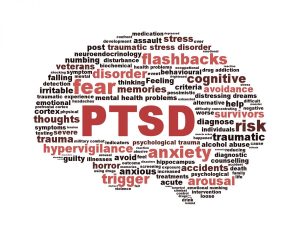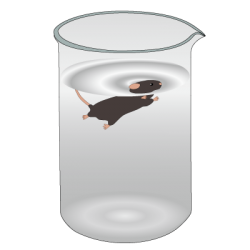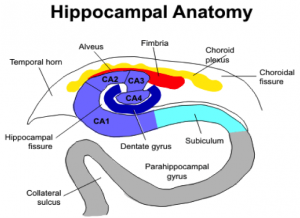
What is PTSD?
PTSD is post-traumatic stress disorder. It is characterized by a number of symptoms that follow a traumatic event in someone’s life. PTSD symptoms are organized into four clusters: re-experiencing, avoidance, arousal and reactivity, and cognition and mood. An example of re-experiencing symptoms would be nightmares or flashbacks of the event. Avoidance symptoms involve staying away from places or people who are reminders of the event. Arousal and reactivity symptoms include angry outbursts and hypervigilance. Mood and cognition symptoms include negative thoughts about oneself and a distorted sense of guilt. It is interesting to note that of all the people who experience trauma that would fit the diagnostic criteria for PTSD, only about 10-20% actually develop it.
https://www.nimh.nih.gov/health/topics/post-traumatic-stress-disorder-ptsd/index.shtml
Animal Models for Anxiety 
https://www.acsh.org/news/2017/11/20/how-mice-help-discover-new-anti-depressants-12171
When studying the effects of stressful situations, animal models are typically used. A research article by Reul focused on the use of commonly used mouse models and stress paradigms. One common paradigm is known as the forced-swim test. The photo above is a depiction of what a forced swim test looks like. In this test a mouse is placed in a container of water with sides that are high enough that it is unable to escape. Eventually the mouse will no longer try to escape or swim and will just float in the water until it is removed. Even in this stressful situation, the mouse will remember that it has no means of escape from the container and on a repeated trial will spend less time trying to escape. This particular test has shown itself useful for the testing of antidepressants. An effective antidepressant will prolong the amount of time that the mouse spends looking for an escape. This also allows us to look out how the brain changes when we make memories under stressful circumstances.
Epigenetics
https://www.youtube.com/watch?v=g12kIu9jrIk
The linked video does a fantastic job of explaining what epigenetics are. How does that relate to PTSD and anxiety? One thing that can cause epigenetic changes is environmental stress. The environmental stress can be the traumatic experience that leads to PTSD. Stress causes the release of hormones known as glucocorticoids. Glucocorticoids can affect cellular functioning and when their levels are elevated long term it can have detrimental health effects. The particular area of interest in epigenetic changes associated with PTSD is the hippocampus. The hippocampus is the part of the brain that is crucial for the formation of memories. Changes here can lead to loss of memory functioning.
https://www.ncbi.nlm.nih.gov/pmc/articles/PMC2891396/
The Dentate Gyrus
https://www.ccn.ucla.edu/wiki/index.php/Unfolding
The dentate gyrus is a small portion of the hippocampus that receives sensory information that has gone to another part of the brain first. This means that it is not receiving raw information, but rather information that has been partially processed. The figure above is a view of the hippocampus that shows where the dentate gyrus is located. The dentate gyrus plays a role in the formation of memories but is also important for pattern separation. Pattern separation occurs when, for example, a red pen and a blue marker activate different responses in the brain. The dentate gyrus is responsible for making the representations of those two different things in the brain more different. What research has found is that the hippocampus and dentate gyrus is smaller in people with PTSD. This could be leading to a lack of pattern separation that makes something that was not associated with trauma cause fear because it cannot be distinguished from another thing that was associated with trauma.
https://www.research.va.gov/pubs/docs/va_factsheets/ptsd.pdf
Benefits of Exercise
It has been said a hundred times that exercise has huge benefits for your health. One mental health benefit is that exercise has been shown to reduce anxiety. Exercise has been used in conjunction with therapy to alleviate symptoms for people who have been diagnosed with anxiety disorders. Exercise should not be overlooked as a way to relieve anxiety that is so common in many of our daily lives.
https://adaa.org/living-with-anxiety/managing-anxiety/exercise-stress-and-anxiety